Uplift Desk Bamboo Motion-X Balance Board Review
- Forensic Review
Like most reviews sites, our editorial staff and laboratory testing expenses are partially offset by earning small commissions (at no cost to you) when you purchase something through those links. Learn More

Overview
| Review Summary |
Balance boards can be a fantastic add-on accessory for standing desk users because they add dynamic movement to your static standing posture, but many are just not well designed to use while actually working at your desk, as you can see with the UpLift Motion-X Balance Board. There’s nothing particularly special about this board and it requires multiple additional accessory add-ons of its own to avoid some common issues. When adding in those costs you might as well upgrade to a true ergonomic balance board designed specifically for use at a standing desk. |
|---|---|
| MSRP / List Price | $89 |
| Street Price | Scan for available discount deals |
| Shipping |
Free |
| Warranty |
15 years |
| Weight Capacity |
250 lbs |
| Dimensions |
27″L x 12.5″W x 2.3″H |
| NEAT™ Certified by Mayo Clinic |
No |
| Competition | Top-Rated Balance Boards |
| Where to buy |
Buy on Amazon |
Rating
| Stability | |
|---|---|
| Safety | |
| Customer Experience | |
| Quality and Aesthetics | |
| Ergonomics | |
| Innovation | |
| Value | |
| Positives | If you’re into the look of bamboo, this board may appeal to your aesthetic tastes. There are no removable or adjustable parts in this integrated design, so it’s pretty simple to figure out how to use and to put away when not using it. The ability to fully swivel on it is great for spinal health and fending off back stiffness. The narrow range of rocking motion is good for users who may have difficulty balancing on more aggressively unstable boards (but is beginner level, for sure, and there’s no way to increase the motion range once you get past beginner level). |
| Negatives | The hard top will hurt your feet if you don’t wear shoes (and be slippery if you wear socks) unless you buy the optional “comfort mat.” Even in shoes, it’s like standing on a concrete floor, not very comfortable for long duration use. The plastic inverted-dome bottom will damage your floors over time unless you buy an additional hard rubber protective mat, and that will only work on a solid floor (the Motion-X is simply not compatible with carpeted floors). There are no other color or finish options, just bamboo (with its associated environmental harms). Some users complain of its limited range of rocking motion, and compared to other balance boards it is somewhat constricted by the rubber bumpers that are intended to protect your floor (which, ironically, they don’t because of the exposed screw heads). The 250-lb weight capacity won’t work for everyone, and it’s a true maximum limit. Anyone heavier will hear cracking noises from the board. As bamboo isn’t really wood, it’s an engineered material made from grass strands, the long-term durability of the plank is very questionable. |
Bottom Line
The UpLift Motion-X Balance Board looks like a very standard entry into the generic balance board category, with a flat bamboo surface and an inverted dome on the bottom side. The question we’ll explore below is whether it has real benefit to the standing desk user, or is it really just a bamboo-topped version of a generic balance board like you’d find in a gym or physical therapy clinic?
Can you actually use it while concentrating on your work?
This is the biggest question for standing desk balance boards in general. Does a balance board affect your ability to get work done at your desk? Many balance boards that provide more of a challenge or a workout aren’t suitable for a work environment because they can significantly degrade your typing and mousing ability, and along with your ability to concentrate on your workflow. The brain can only take on so many foreground tasks, and if it’s constantly expending effort to keep your body balanced it will take a toll on your other cognitive functions.

This is where balance trainers, rocker boards, exercise, twist boards, exercise boards and many of the other devices generally falling under the category of “balance boards” we’ve reviewed fall short for work use. Our expert review staff always looks at these products through the lens of how usable they are without having to step away from your actual work.
The UpLift Motion Board is sort of in the middle of the road in terms of the amount of concentration it requires to actually use while typing. While it’s not as bad as some truly aggressive balance boards, in that you can make limited movements while continuing to think and type, you may find that you just wind up standing still for the majority of the time that you are focused on your thoughts and hand movements. With its hard, inflexible surface standing on it for long periods of time will get painful pretty quickly.
Like many balance boards, its best use is thus relegated to times when you’re perhaps consuming content rather than creating it, like watching a boring webinar or standing in on the fifth Zoom call of your day. Building a spreadsheet or drafting a memo is going to be much harder to do while you’re trying to keep your body moving fluidly on the device.
Problematic Surfaces
The UpLift Motion-X top surface has some big issues. First, contrary to the “greenwash” marketing that UpLift and some of its competitors are famous for, bamboo is actually terrible for the environment (despite the one touted benefit of its high rate of growth compared to real trees). Second, the surface isn’t suitable for standing on without shoes.
If you don’t have shoes, the hard wood surface will quickly cause foot pain. And if you try to wear socks, the surface will be too slippery and unsafe. UpLift did recognize these issues and now offers a “comfort mat” for the top of the board for an extra $30. It’s important to note this glue-on foam piece is made from the same material you commonly find in yoga mats. It will definitely help the slipping-in-socks issue, but it will only slightly delay the onset of foot pain. This isn’t the same material as used in a quality standing desk anti-fatigue mat. Adding this mat will leave only a narrow border of pretty bamboo to look at, too.
We mentioned the bottom surface earlier, but let’s revisit the cheap plastic dome. This will damage any smooth floor, a frequent complaint of users. That’s just the reality of having a hard object with a small surface area and a lot of blunt contact pressure constantly moving against your floor. Even a slight 140 lb user with their weight focused on less than a square inch of hard plastic will act as a small jackhammer on your floor finish.

If you want to protect your floor, you’ll likely need a hard rubber mat below the Motion-X board. Placing it over an anti-fatigue standing mat won’t work well as the dome will sink into it (killing rotation), and it’ll probably destroy the mat in short order. If you need a comfort mat on top and a hard rubber mat below, at some point you have to concede this might not be the best balance board out there, especially for this kind of moolah. And moving that floor-protection mat out of the way every time you want to move your chair in to sit will get old quickly.
If you have carpeted floors then you need to be aware that the same high force-per-square-inch that the inverted dome imposes on your floor surface will crush the carpet fibers and leave an unsightly impression over time. Swivel motion is something you’ll want to avoid for the same reason.
We really can’t recommend this product for use on carpeting of any kind, and definitely not on finely-finished solid wood floors. Even cement or ceramic floors will get beaten up with enough use. Ceramic may even be too slippery to be safe. So we really struggle to come up with scenarios where this product would sing.
The Details

The Motion-X board has a weight capacity of 250 lbs. This is fine for most users, but well behind our favorites in the category like iMovR’s Gymba (660 lbs), the Wurf Maui (350 lbs) and Fluidstance’s The Level (300 lbs). Bamboo is known for its looks, not its strength, and we have serious concerns about how durable this product will be. The good news is that UpLift backs the Motion-X board with a 15-year warranty, but you may find yourself prosecuting it.
There’s only one color option, the standard bamboo finish.
UpLift offers a couple of deals if you need a lot of these boards, a 6-pack for $385 and a 6-pick with comfort mats for $505.
The Takeaway
The UpLift Motion-X balance board is a very standard entry into the balance board category and it, therefore, suffers from many of the pitfalls we commonly see in cheap designs that aren’t really intended for use while working at a standing desk. The top is hard and slippery if you don’t spring for the extra mat (which won’t help you avoid foot pain for too long but will offer traction for socked feet). The bottom is cheap plastic that will damage your floor if you don’t buy an extra hard rubber mat (seeing a trend here?).
Aside from all of that, the board’s generous range of motion means it will require a little too much focus to actually concentrate and type while you’re working.
We see a lot of standing desk makers start to offer balance boards because of some exciting Kickstarter and Indiegogo campaigns that vaulted the category into a profitable add-on accessory for standing desk sellers, but most designs aren’t actually going to work well if you’re planning to work and get movement at the same time. Check out our comprehensive round-up of Balance Boards For Standing Desks reviews to find out which motion boards actually work best.
If you’re interested in exercising with your balance board, we’ve put together a list of our favorite balance board exercises.

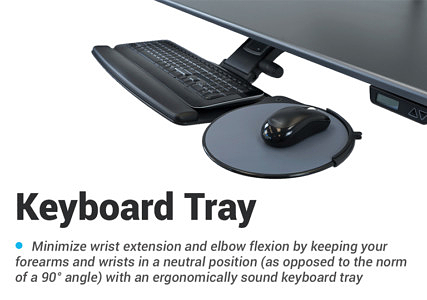
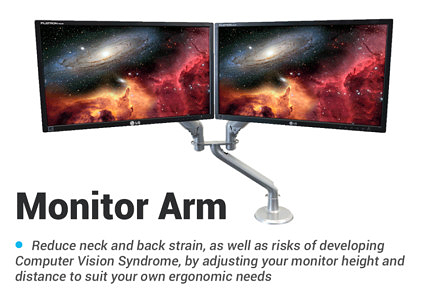
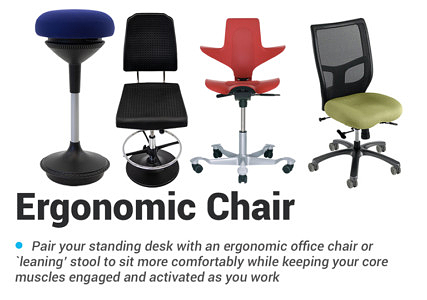
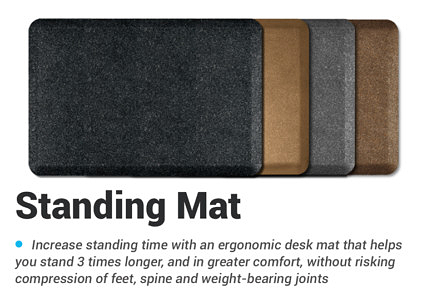
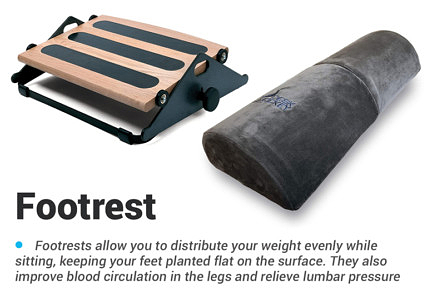
0 Comments
Leave a response >